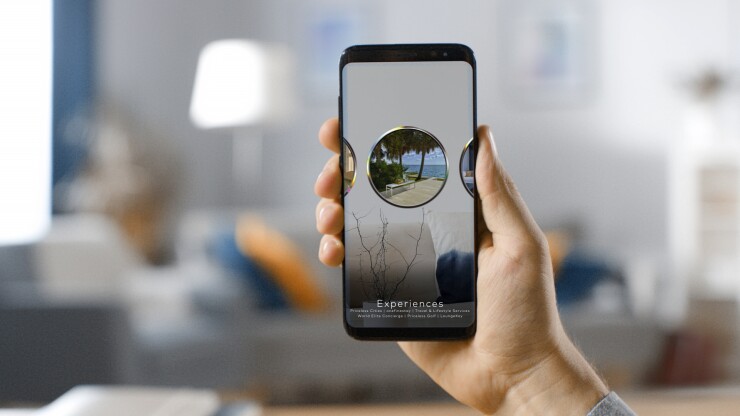Even in mature markets, consumers may not feel very connected to their payment cards. This is making issuers more reliant on selling data-driven experiences over simple transaction processing.
Augmented reality, which overlays a digital experience on top of the physical world, is one way to help consumers visualize the extent of their relationship with their issuers.
“The reality when it comes to cardholder benefits is consumers don’t always understand these benefits,” said Cheryl Guerin, executive vice president of marketing in North America for Mastercard, who adds the card brand’s research suggests about a third of cardholders understand the benefits that are available to them.
In attempt to fix that problem, Mastercard is turning to emerging technology more associated with e-commerce or mobile gaming. Prominent uses of AR include the Ikea Place app for viewing how furniture would look in a shopper's home, and the Pokemon Go app for capturing or photographing Pokemon as they appear in the player's surroundings. Banks such as
The card brand is using augmented reality to provide its own “photorealistic” experience through a series of interactive portals.

The card network predicts that AR will be transferable to incentive marketing by adding an example of the "reward" in action. “We’re looking for any way to improve and increase redemption, to show that the cards are desirable,” Guerin said.
Mastercard's rewards AR app prompts users to scan their card to start a session, then prompts consumers to use their phone to scan the area around them. In front of their surroundings, consumers see portals such as “experiences,” “everyday value,” or “peace of mind.”
The visuals on the phone's screen correspond to the portal — peace of mind is a spa, and everyday value is a home.. A set of golf clubs results in information about golf-related incentive marketing.
There are also partner brands, such as Lyft, Fandango and Postmates, though the brands are not involved in the design of the 360 degree virtual images. Fandango, for example, would appear as a film reel with movies, offers and benefits.
Mastercard plans to launch the AR rewards app for iPhones in the second quarter, with other platforms to follow. It also plans to offer an API to sell issuers to embed the AR into their own card incentive programs.
The AR rewards app follows an earlier initiative at Mastercard to speed
Marrying AR to benefits is a gateway that can form habits that are transferable to other card functions.
“Augmented reality is a great way to leverage loyalty and rewards and is the precursor to adding secure payment capabilities to AR,” said Krista Tedder, head of payments research for Javelin Strategy & Research.
Retailers are using AR to help with product selection and consumer engagement for home furnishings, home improvements, jewelry and fashion, Tedder said.
“For Mastercard to jump into AR for loyalty through a standalone app adds ways for Mastercard to begin using augmented reality with low risk, and it retains the customer experience," Tedder said. "As AR takes off in lower risk areas, look for enabling payments…being able to not only receive a discount but being able to pay for the product or service at the same time.”





